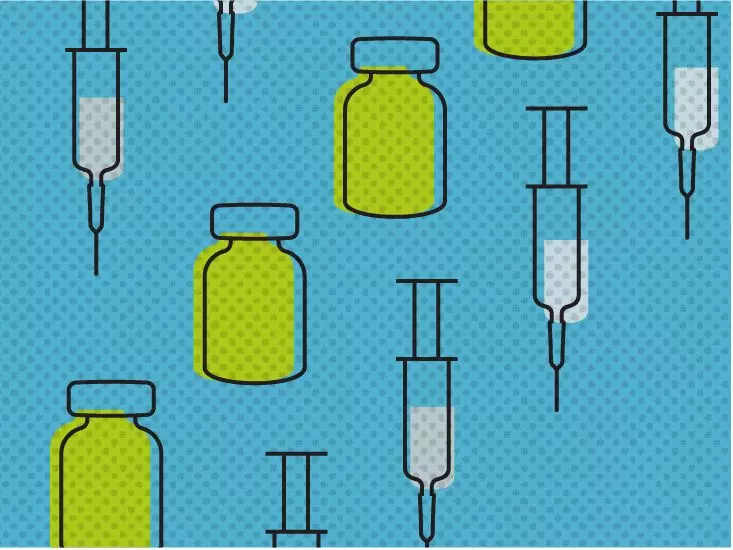Schizophrenia is not merely a mental illness; it represents a complex interplay of genetic, neurobiological, and environmental factors that disrupts a person’s thinking, emotions, and behavior. Individuals fighting this disorder often oscillate between reality and a distorted perception of it, making everyday functioning a formidable challenge. Traditional treatments might offer considerable support, but ongoing innovations in drug therapy are essential for improving the quality of life for those affected. Among these innovative treatments is Invega Hafyera, a newly approved long-acting injectable form of paliperidone showcasing a promising step for those diagnosed with schizophrenia.
Introducing Invega Hafyera
Invega Hafyera is a brand-name injectable suspension offering adults a more extended dosing interval—once every six months—than its predecessors, Invega Sustenna and Invega Trinza, which require administration every month or every three months, respectively. This less frequent regimen stands to alleviate the burden of regular visits for injections, promoting better adherence and ultimately improving patient outcomes. The active component, paliperidone palmitate, falls under the category of atypical antipsychotics, which are lauded for their comparatively favorable side-effect profile when treating schizophrenia.
Dosage Dynamics: Tailoring Treatment for Individuals
Determining the correct dosage of Invega Hafyera involves a thoughtful evaluation by healthcare professionals. Factors such as the severity of the illness, the patient’s recent treatment history with other forms of paliperidone, and even renal function play pivotal roles in dosage decisions. For example, a patient’s previous doses of Invega Sustenna or Invega Trinza will significantly influence their starting point with Invega Hafyera. The drug is available in two strengths: 1,092 mg in 3.5 mL and 1,560 mg in 5 mL, providing versatility based on individual treatment trajectories.
The transition from more frequent dosing to this biannual regimen could significantly reduce the stress and anxiety that often accompanies regular medication administration. This shift permits individuals to focus on their overall mental health rather than the relentless cycle of pharmacological management.
Administration and Clinical Considerations
The administration of Invega Hafyera is designated for medical professionals, as it involves an intramuscular injection likely delivered into the buttocks. This aspect of treatment not only ensures proper dosage but also fosters a controlled environment where patients can receive immediate support should any complications arise. The clinical setting can augment the therapeutic experience, as it associates treatment with support rather than isolation—a critical consideration for mental health therapies.
However, while Invega Hafyera’s long-term usage indicates the potential for significant patient benefits, it is not without its caveats. Healthcare providers must remain vigilant for any side effects, which can vary in severity. Regular monitoring and open lines of communication between patients and medical professionals are fundamental in navigating treatment hurdles, as timely intervention can mitigate adverse reactions and ensure sustained progress.
Simplicity and Flexibility in Medication
One of the critical advantages of Invega Hafyera is its schedule flexibility. Patients have a window of up to two weeks before or three weeks after their scheduled six-month injection to receive the medication. Such a buffer acknowledges the complexities of life that can lead to scheduling challenges, promoting higher adherence rates. This flexibility could be a game-changer for patients who struggle with routine medical appointments, allowing them to maintain their treatment without severe disruptions.
Empowerment Through Information
Empowering patients involves not just offering medication but educating them regarding their treatment. Understanding the dynamics of dosage adjustment, potential side effects, and the implications of missed doses fosters a sense of control and autonomy. Patients should actively collaborate with healthcare providers to establish a treatment plan that resonates with their lived experiences.
Moreover, while the risks of overdose are minimal due to the structured administration process, it’s imperative for patients and their families to know the steps to take if they suspect an over-administration. This health literacy ensures patient safety and maximizes therapeutic outcomes.
Invega Hafyera exemplifies a significant advancement in the pharmacological management of schizophrenia, aiming to reduce the burdensome frequency of treatment while enhancing the quality of life for individuals navigating this complex condition. As we continue to seek innovations in mental health treatments, the focus must remain on patient-centered care and empowerment, ensuring that individuals battling schizophrenia are equipped with the tools they need to lead fulfilling lives.

